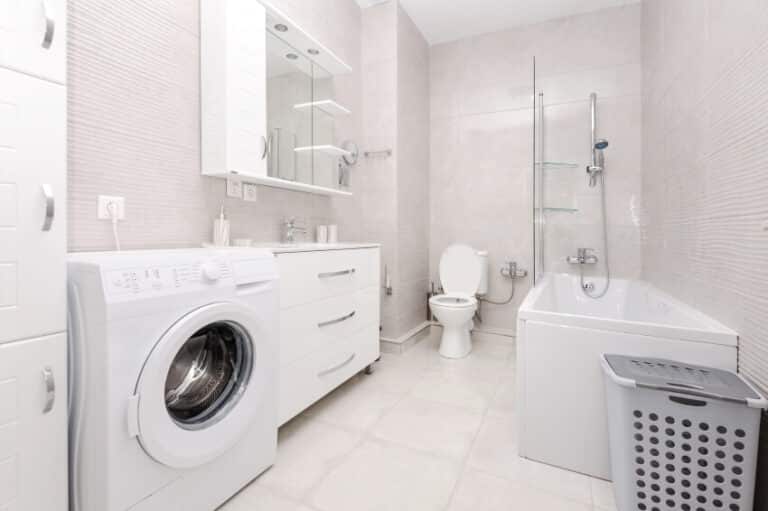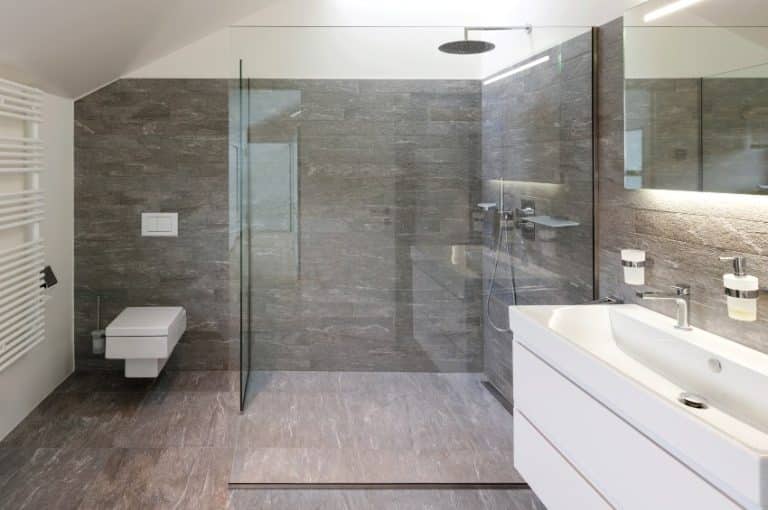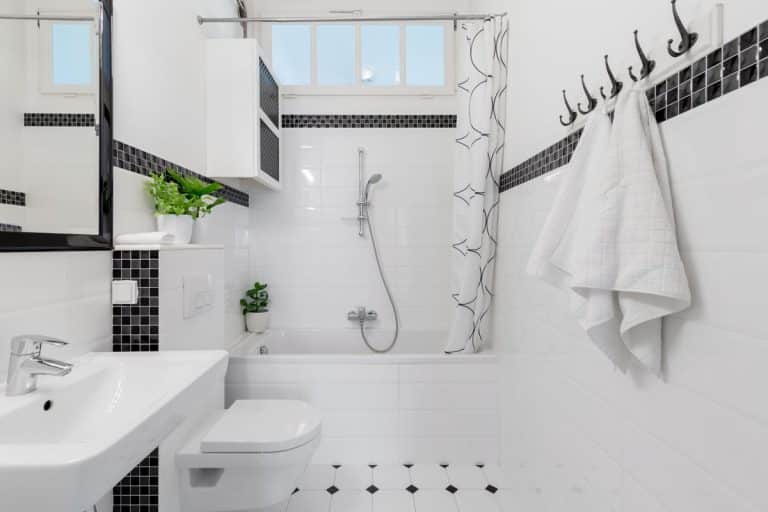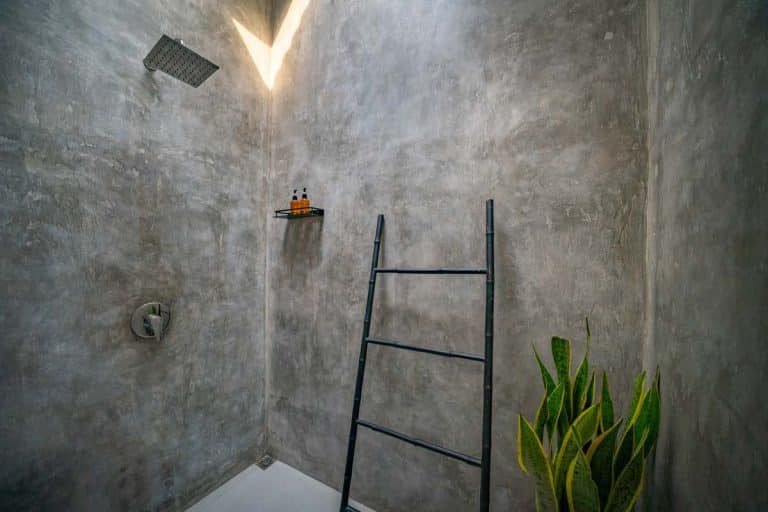Saltillo Tile In The Bathroom (Benefits & Choosing Styles)
Saltillo tiles have been used for decades; many have probably seen these Mexican tiles but are unfamiliar with their name. The term Saltillo refers to where these tiles originated and continue to be made by hand. With their longevity and rustic qualities, the traditional tiling material Saltillo tiles continue to be a popular option.
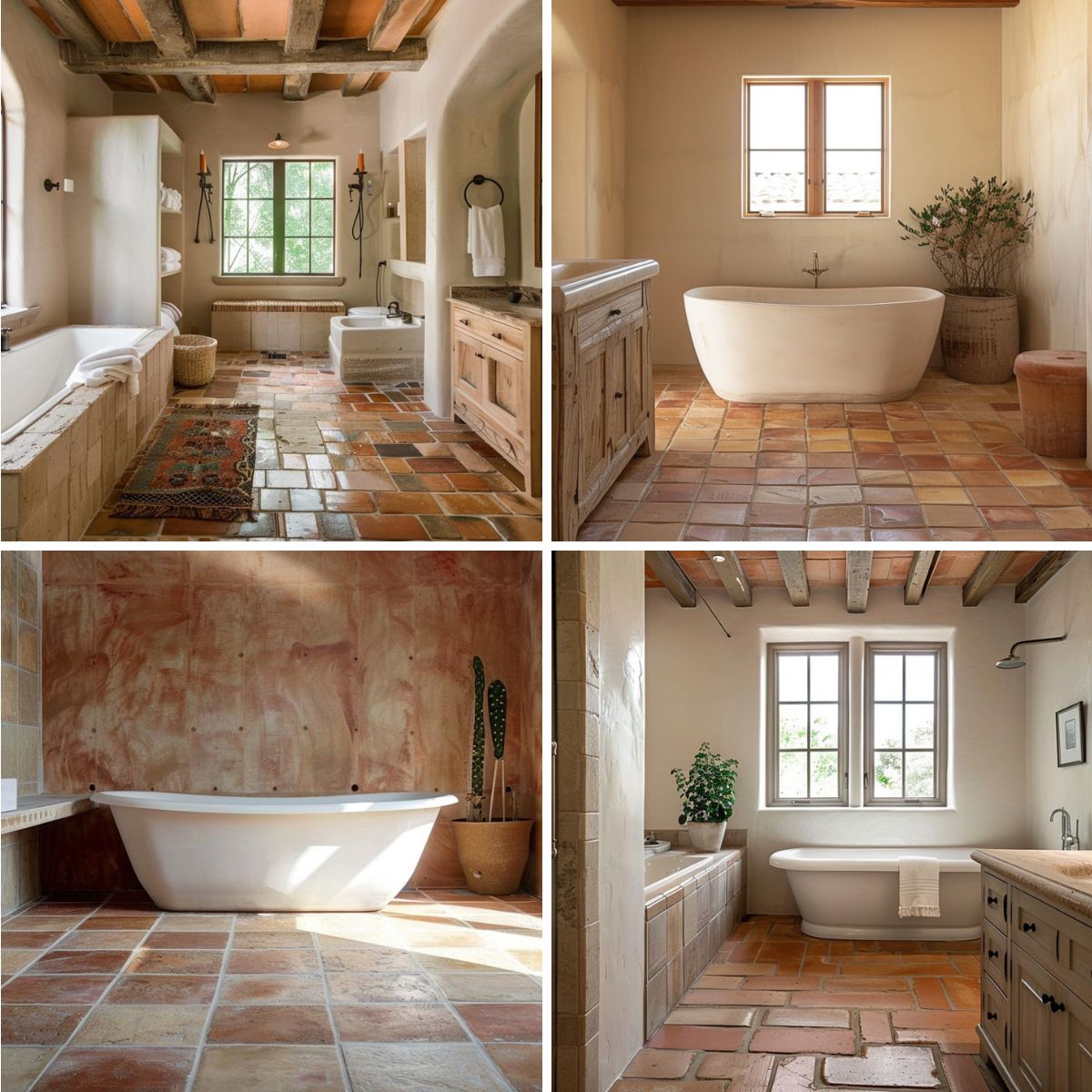
Santilllo tiles in bathroom spaces are an attractive option because of their unique qualities, which include warm color and insulating properties. Its old-world charm can also be combined with modern materials in your bathroom, for instance, glass or chrome hardware. Continue knowing the pros and cons of Saltillo tiles in the bathroom by continuing reading below.
Saltillo Tile for Bathrooms Pros and Cons
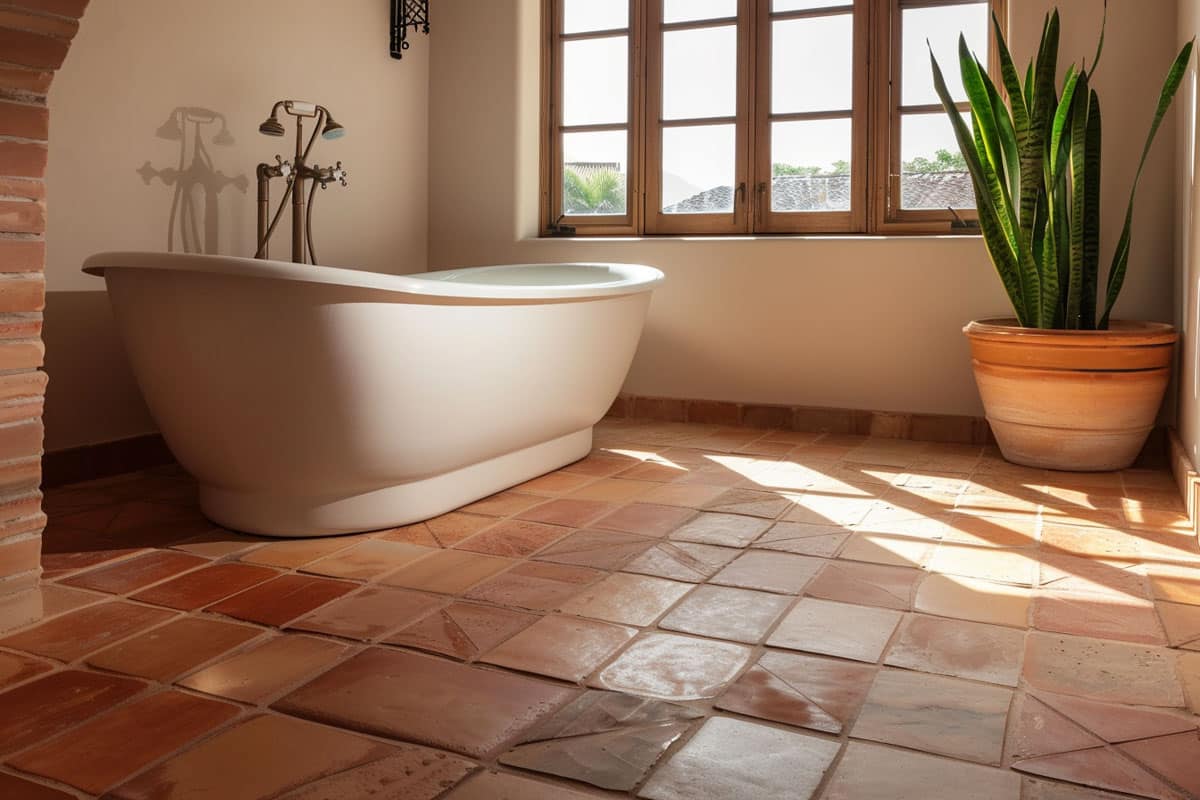
Pros
Add warmth to your bathroom space: Bathrooms are already filled with sleek and glossy finishes that can be cold to the touch as well as visually. Saltillo tiles are perfect finishing materials to add a sense of coziness due to their material and color.
The fiery tones also perfectly contrast the colder neutrals, creating a balance of color temperature. The visual weight of Saltillo tiles also makes it a perfect flooring material or an accent wall.
Comfortable to walk on barefoot: More than just visual warmth, the tiles can be comfortable to walk on, especially when underfloor heating is provided. This is needed, especially when using the bathroom area during the winter or cold months.
Environmentally friendly: Since Saltillo tile floors are made from natural materials, mainly clay, they are easy to dispose of or recycle. Damaged clay tiles can be remade as pottery or any other craft products. The raw material, when released in the natural environment, has minimal to zero off-gassing or release of harmful chemicals.
In addition, because it is handmade, it uses less energy compared to your machine-made. Moreover, you get low emissions as they are kiln-dried with either natural gas or other clean-burning fuels.
Comes in interlocking and standard sizes: You have options for the standard square Saltillo tiles that usually come in 3 x 3, 4 x 4, 6 x 6, 8 x 8, 12 x 12, 16 x 16, 18 x 18, 20 x 20, and 24 x 24. If you have a particular size in mind, some manufacturers welcome customized sizes. The typical thickness of most Saltillo tiles is ¾ inch.
Common Shapes:
• Square
• Octagon
• Hexagon
• Rhomboid
• Picket
• Star
• Cross
• Fleur de Lis
• San Felipe
• Botella Pattern
• Riviera Pattern
• Pool Coping (for stairs/walls)
• Bullnose Baseboard (for stairs/walls)
Opportunity for a unique finish: Due to the variation of size, color, and layout patterns available, you can create bathroom flooring that’s customized to your preferences. The varying colors of your Saltillo tiles also mean your tile installation has one-of-a-kind coloring.
Timeless and more durable than most tiles: The rustic charm of Saltillo means it’s a sensible floor finish for informal spaces with high traffic. The artistic warmth of these tiles can be enjoyed for around 30 to up to 100 years, depending on how you maintain the tiles.
It is also important to distinguish tiles from their PEI rating (Porcelain Enamel Institute) as the rating measures the hardness of its glaze. A good PEI rating for residential use is from PEI of 3 to 5.
Rustic charm sells: The earthy color can be an attractive selling point for homeowners, as these can be challenging to install and is rarely specified as a finishing material. This unique feature can potentially increase your property’s market value and attract buyers who appreciate rustic and eco-friendly materials. While its appearance is usually a pro there are plenty of people who just don’t like the look.
Patronizing handmade products: Handmade products are usually more expensive than factory-made products, but there’s an authentic quality about handmade products unmatched by their commercial alternatives. This adds charm to the tiles.
Cons
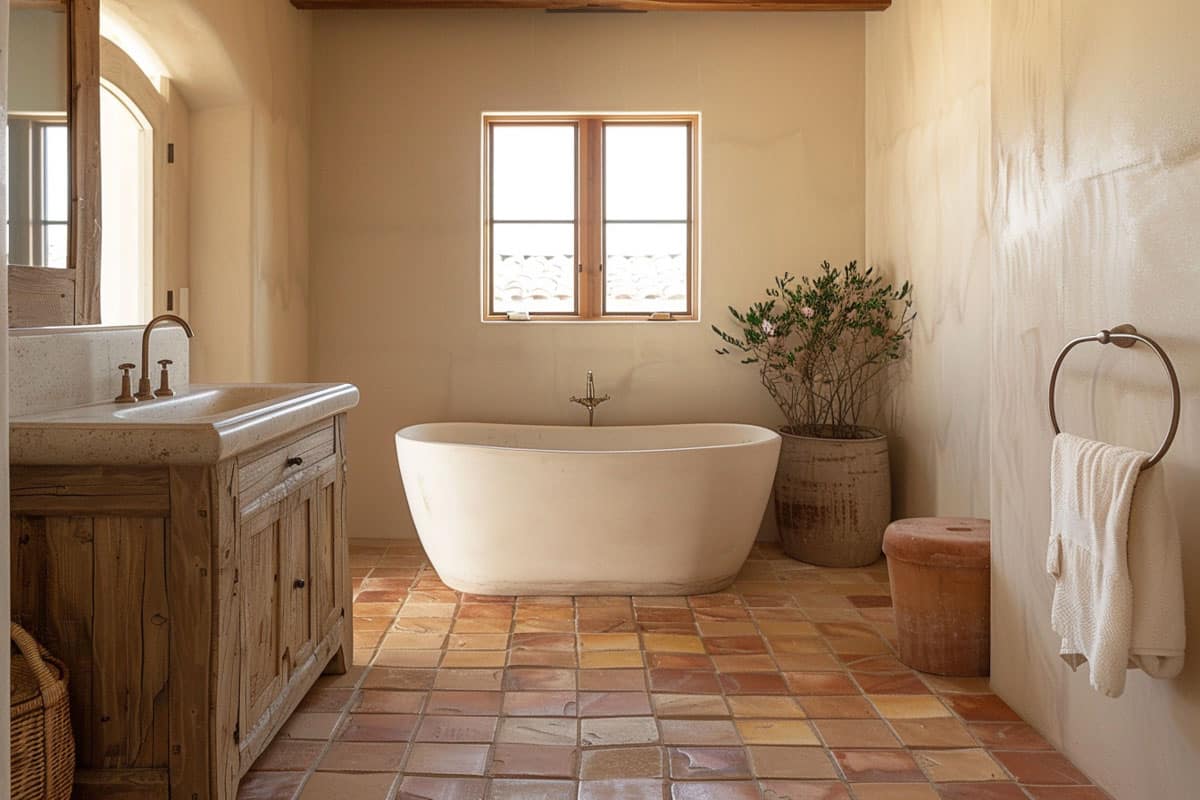
You don’t have a uniform size and thickness: The variations of Saltillo tiles are part of their charm but can also bring disadvantages, wherein you may need to get more materials compared to your typical commercial tiles. A 25 to 35 percent material wastage is recommended for tiles to be added to the total amount of tiles you need.
So, for instance, you estimated that 100 pieces of Saltillo tiles are needed for your bathroom. Thus, multiply 100 x .35 (material wastage) = 35 pcs. Thus, 35 pcs + 100 pcs = 135 pcs total. In the meantime, commercial tiles usually recommend 10 to 15% material wastage.
Variation in color: The handmade tiles will vary greatly per batch. That’s why it is recommended to add to your order material wastage and stock up on extra tiles from the same batch. However, weather conditions and other factors still have the potential to change the appearance of your Saltillo surfaces over time.
Wide and visible grout lines: Groutless installation is not recommended for the handmade tile due to the variation of thickness and sizing. Using groutless installation on your Saltillo tile will result in visible misalignment of tiles and risk of tile movement.
Shifting tiles under pressure over time can lead to cracking and allow water seepage that can cause significant damage over time. A 1/2″ grout is the typical thickness of your grout joint, but larger formats are best with a thicker grout width.
It is not recommended to use an ordinary thin-set: Because Saltillo tile is less dense and prone to water damage and movement, semi or fully-modified thin-set is recommended. The thin-set is made of latex or acrylic, which is made to have excellent bonding strength, but at the same time, it can expand or contract without cracking. This flexibility is beneficial during temperature fluctuations or during building movement.
Sealing is required: While Saltillo tiles are kiln-dried, they still remain porous and prone to water damage. This means you’ll need an excellent sealant to apply on the surface to prevent moisture and water seepage. Some tile manufacturers recommend their own sealant solution.
The most common types of sealants for Saltillo tiles include solvent-based penetrating sealers, which can also enhance the natural appearance of your tile. You can opt for water-based sealers if you’re concerned with harmful fumes. Both the solvent and water-penetrating sealers go into the porous surface and fill in the pores with the protective solution.
Slippery when wet: Since most Saltillo types of floor tile installations opt for a sealed surface, expect more slippery flooring. This makes these tiles more suitable to install in hot areas and places that don’t experience snow. Santillo tiles are also best for interiors, but with proper installation and treatment, they can still be a suitable flooring finish on exterior areas.
Lime Pop and Efflorescence: Sometimes termed “whiskers,” they are white powdery substances that appear on the surface. Like any other clay and cement product, these seeping through of salt deposits to the surface naturally occur and can be prevented by proper curing and sealing.
Cure the Saltillo tiles in a well-ventilated area. Some manufacturers have recommendations and instructions that customers can follow before installation. But if efflorescence is already seeping through your bathroom floors, you can use acid cleaner to scrub off the salt deposits. It is best to consult your manufacturer or a cleaning contractor before applying any type of detergent.
Color And Texture Variations Of Saltillo
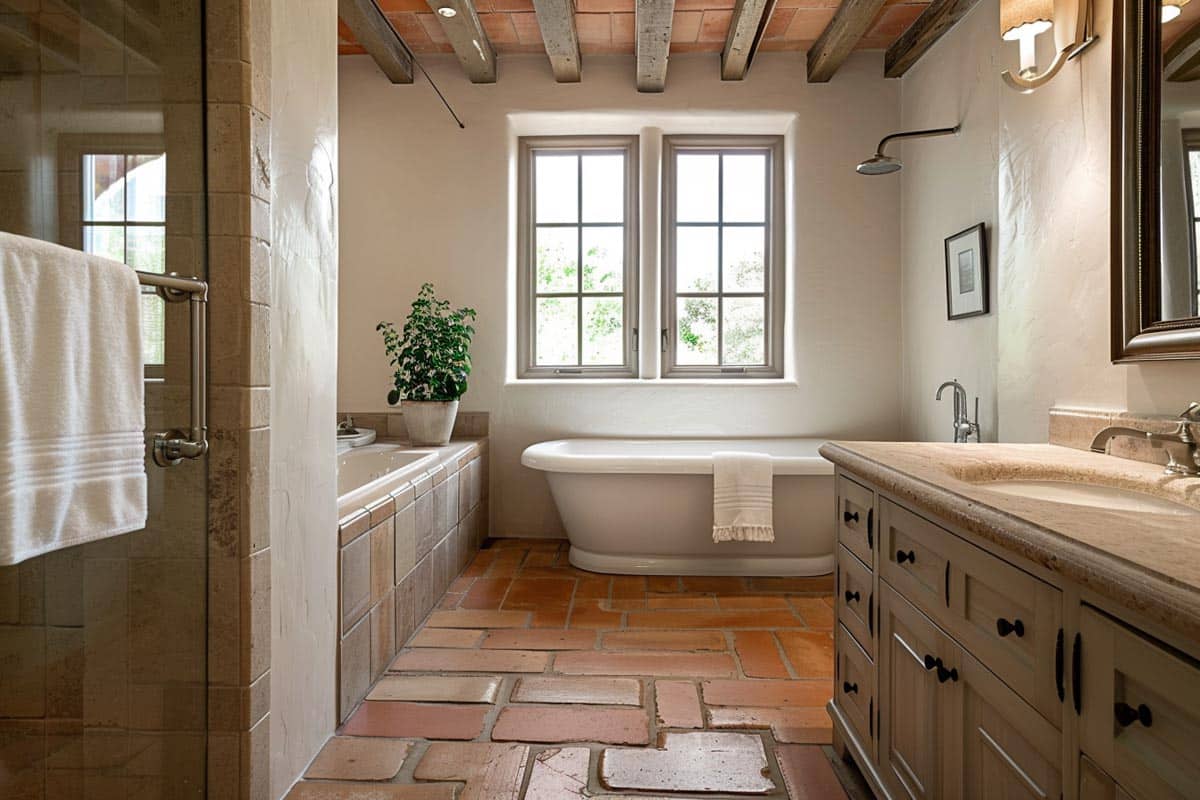
Saltillo tiles mainly come in oranges, yellows, and brown colors, with the most common types being Manganese, Antique, Spanish Mission, and Traditional Saltillo tiles.
• Manganese Saltillo: Light and dark brown, beige gray and terracotta tones
• Antique Saltillo: Textured surface with copper varying terracotta colors
• Spanish Mission Red Saltillo: Dark terracotta colors of lighter tones. Antique textured Mission Red is a variation.
•Traditional Saltillo: Terracotta shades, golden cream, and orange tones.
Choosing The Right Saltillo Style Tile For Your Bathroom Aesthetic
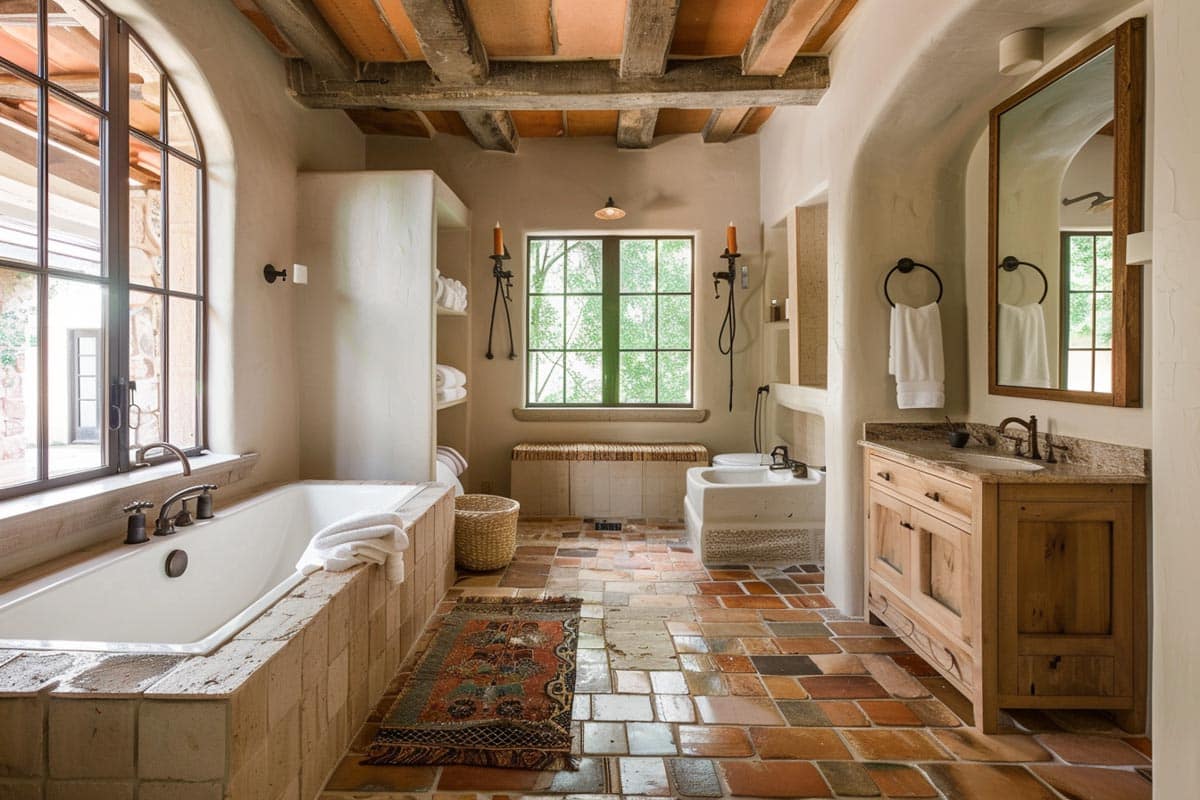
Mimicking the nuances found in nature, Saltillo tiles come in varying shades, but colors range from warm yellow to brown to orange. These tones are reminiscent of Mediterranean casas with whitewashed or neutral-toned walls and warm-colored flooring. A sun-kissed bathroom floor is perfect for white walls but can also work with cool and deep colors to create a mood-evoking space together with the right lighting.
With their rustic nature, Saltillo tiles are best for rustic themes, such as vintage, country, and rustic. So detailed shapes such as the fleur de lis are great for traditionally themed bathrooms. Contemporary bathrooms can work with rectangular or square tiles.
Aside from color and shape, you will consider the type of finish, which includes matte, semi-glossy, and glossy. Saltillo tiles are usually not glazed, so you’ll need to seal the entire finish as well as an option for a finish coating.
Coordinating Saltillo tile with bathroom fixtures and décor: Start with color, which is the easiest quality to match. Choose complementary colors, such as green for red, purple for yellow, and blue for orange, which are the typical shades of your Saltillo tiles.
Saltillo tile is a variety of terra-cotta paving tile made from clay originating from the Mexican city of the same name. The clay is hand pressed into a wooden frame or carved into tiles with either square or rounded edges. – Materiality and Interior Construction, Jim Postell, Nancy Gesimondo, James Christopher Postell
You can choose lighter variations as accents and use a neutral tone or pale tone for larger visual areas such as the walls or ceilings. White is popular as it allows the vibrant color of the tiles to pop into the scene.
Another consideration is to add other natural materials, such as wicker or wood, to the scene. Metal materials are also welcome and add somewhat of a contrasting nature to your clay material. Aside from materials, don’t forget to include the lighting design of your bathroom space to take advantage of the coloring.
Cost comparison with other bathroom flooring options: Your typical price range for regular-shaped Saltillo tiles starts at $3 to $8, but intricate shapes and customized designs will cost more, with an average cost of $6.5 per square foot. The price range includes labor and materials.
This is in comparison to ceramic tiles, which cost $15 and $2, and porcelain tiles, which cost $8 to $44 per square foot. Meanwhile, glazed terracotta floor tiles, which is another type of Mexican tile, costs around $5 to $15 per square foot.
Added factors to the cost per square foot including labor and material will include warranty options, tile quality, shipping costs, etc. But overall, Saltillo tiles are considered a cost-effective finishing material. However, sealants are required for bathroom flooring made of this material.
Climate considerations: Saltillo tiles have an excellent insulating property, just like other terracotta materials. This means that it can retain heat and cold to a certain extent. That is why it is best to use radiant heating systems in bathrooms, as these tiles will provide an even and steady warmth for flooring applications. At the same time, it can feel colder to touch when subjected to cold temperatures. In a bathroom, Saltillo tiles can provide even heating in bathrooms.
Potential slipping hazards when wet and mitigation strategies:
• With a porous surface, sealant is needed to prevent water seepage through the tiles.
• To prevent slippage, choose high-quality penetrating sealers. Slip-resistant coatings, which are applied after the sealant is applied, are available on the market.
• Place bathroom types of rugs or mats on key areas such as by the front door or in the bathroom or shower area.
• Ensure your grouts are properly sealed to prevent water and dirt from entering the exposed pores.
• Plan a good drainage system. With water immediately drawn to the drainage pipe, this prevents water from pooling on top of the tiles in your bathroom.
Saltillo Floor Tile Installation Tips
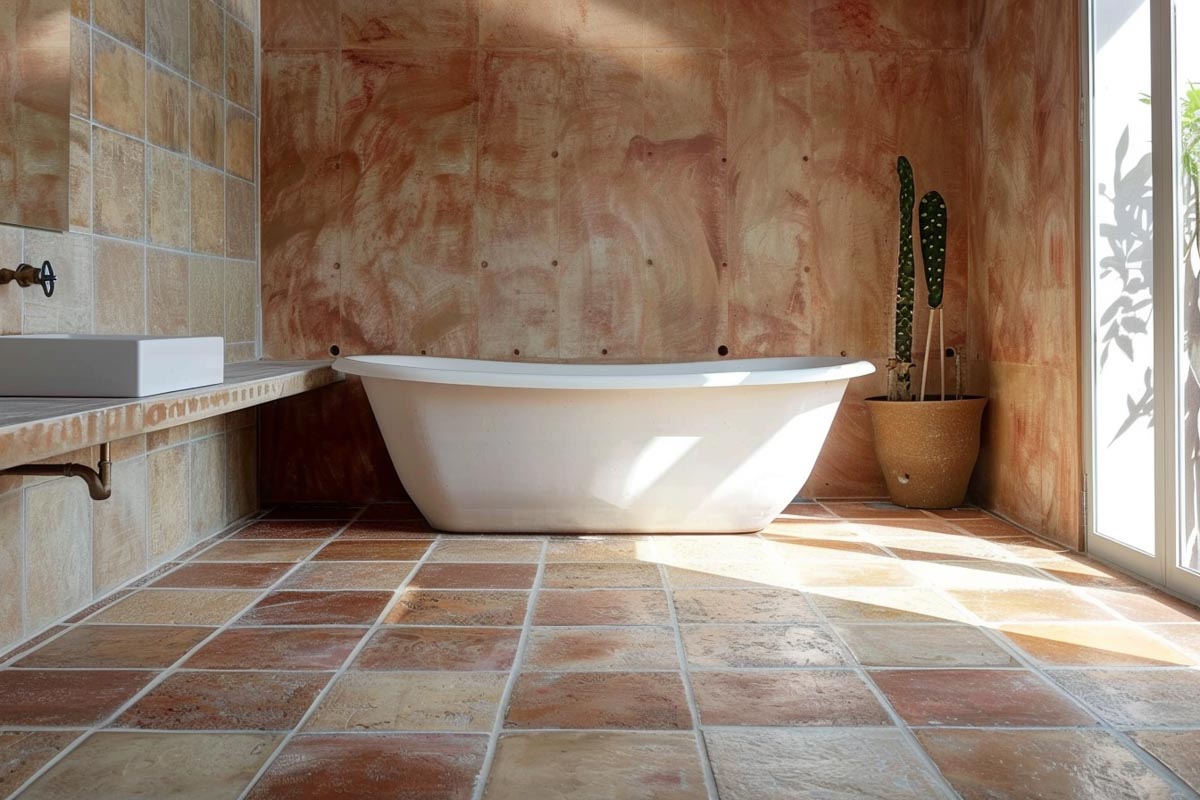
• Like lumber and other tiling materials, acclimate your Saltillo tiles so they can adapt to your bathroom’s temperature and humidity levels.
• Be sure to have a leveled substrate that is free of contaminants.
• Before actual installation, lay out a plan on the position of every tile. This gives the contractor an overview of how to install.
• To save on installation costs, you can remove existing tiles yourself before hiring professional installers.
• You can cut Saltillo tiles using a wet saw or tile cutter.
• It is recommended to use a thin-set mortar especially made for motors.
• Opt for medium to large tiles laid in simple rows instead of small tiles in complex patterns.
• When using Saltillo tiles, having only one type of natural stone is more visually pleasing. This showcases the tiles while it gives and prevents clashing of colors and elements.
See more related content in our article about travertine bathroom floor on this page.

